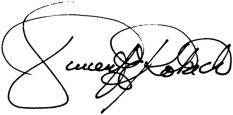The world of journalism is gradually transitioning from print to online versions of newspapers, magazines, and scientific journals. As a member of the American Association of Orthodontists, you can read the current issue of the AJO-DO on your computer or any handheld device that will allow you to access the Internet. But many of our readers prefer reading articles in print rather than on a screen. We understand this preference and have no current plans for eliminating the printed journal.
On the other hand, when you access the electronic version of the journal online, there are features that simply cannot exist in the printed version. For example, each month, the author of a selected article presents a video on the AJO-DO Web site that discusses that particular research project and provides personal insight about the study. Obviously, this feature would be impossible in the printed version. In addition, adjacent to the abstract of every article on the AJO-DO Web site, there is an option for the reader to create and view a list of related articles and their abstracts. Again, this would be impossible to accomplish in the printed version.
So, for the orthodontist who prefers the printed version, it would be advantageous to have some method of directly linking to the Internet to access valuable additional information. That technology exists and, starting this month, will be a part of the printed version of the AJO-DO .
Connecting paper-based content to the Internet is accomplished with quick response (QR) codes. QR codes (see image above) were developed in 1994 as a paper-based hyperlink. They can be positioned adjacent to any printed material. The reader simply takes a picture of the code with a smart phone application and is immediately redirected, via the cell phone’s browser, to a specific location on the Internet. QR technology allows cell phone users to scan paper-based content with the cell phone’s camera to decode information contained in the code and to access various Internet destinations.
QR codes are popular in Asia. In fact, code reader technology typically ships with most cell phones in Asia. However, this is not the case in the United States. So, you will need to download an application to your smart phone. The application is typically free and is available for most smart phones. Once you’ve downloaded the application, simply use it to photograph the QR code; you will be automatically directed to a specific Internet site, where you can get more information about the subject matter that appeared on the printed journal page.
The use of QR codes in the AJO-DO will develop gradually with time; this month we are introducing 3 links from the printed journal to the Internet. Scan the QR code on this page and view a new video presentation. Look for another QR code adjacent to the featured article in this issue of the journal and use it to view a video by the author. Finally, turn to the masthead page (where we list the editors and associate editors) and scan the code to see photos of the journal staff. In the future, we’ll add QR codes to the Information for Authors page, linking to one of several videos explaining how to prepare an article for publication.
You will also find QR codes embedded in some advertisements in the journal. These codes give you access to either the companies’ Web sites or more information about products featured in the printed advertisements.
As you can see, there will be many potential uses for these QR codes in the journal. We are confident that this technology will assist the readers who prefer the printed journal to connect easily and directly to the Internet, where expanded information can be obtained. So, download the QR decode application and start photographing the codes. I hope that you will use and enjoy this new technological feature.





